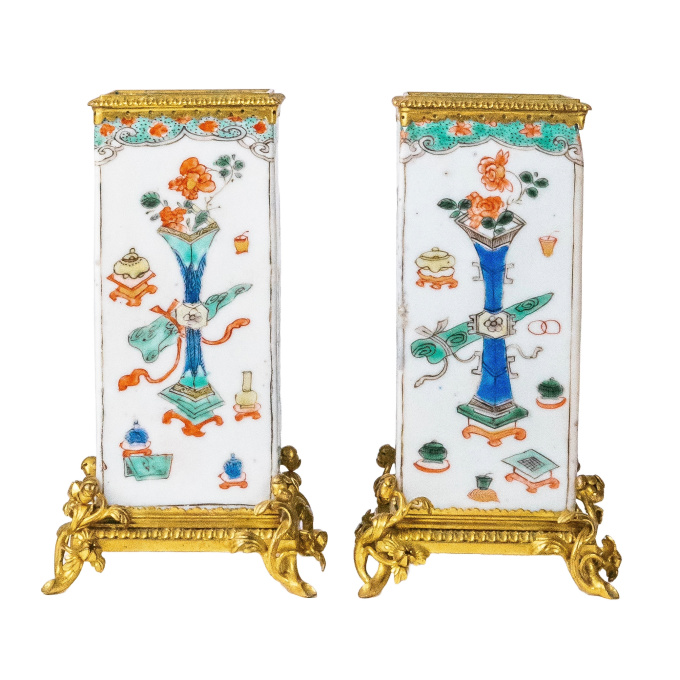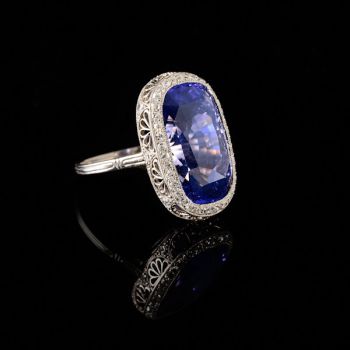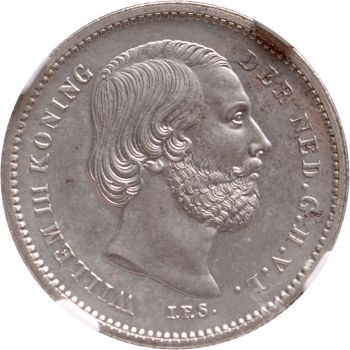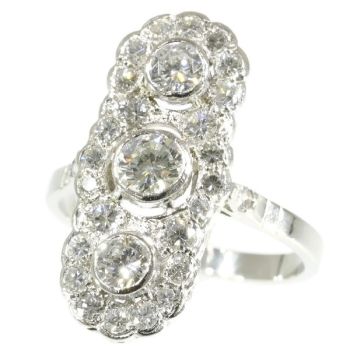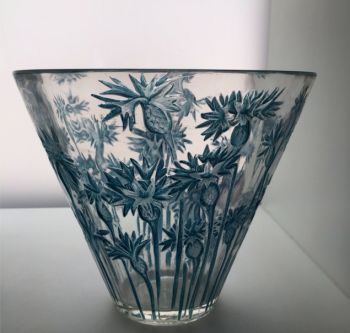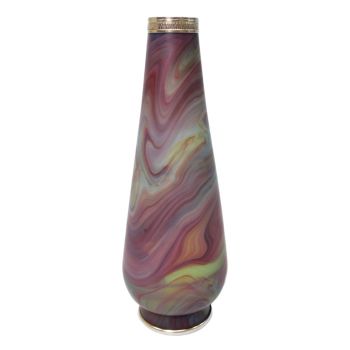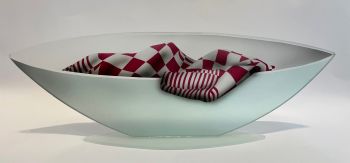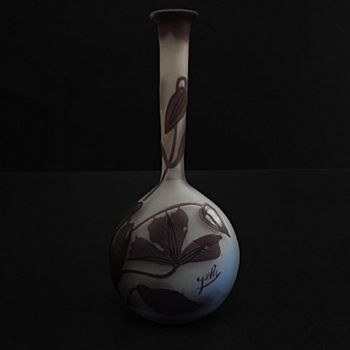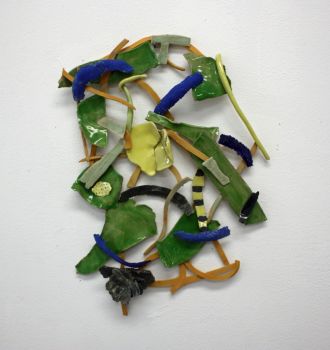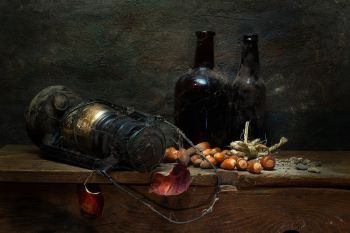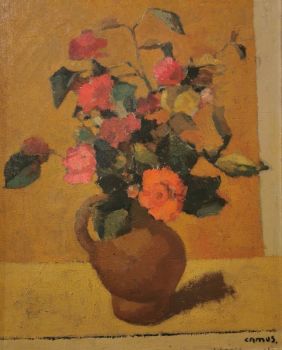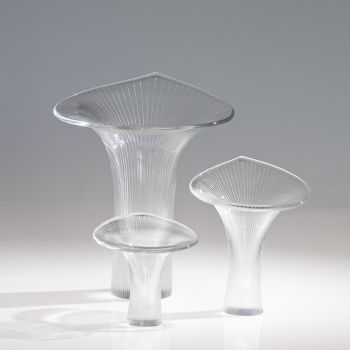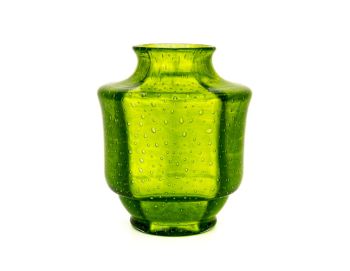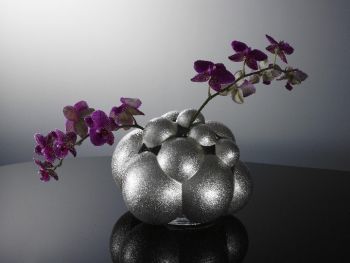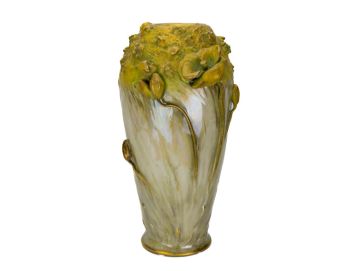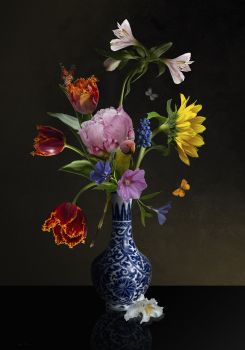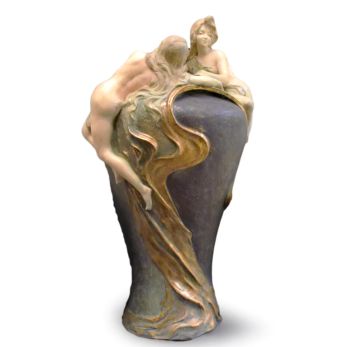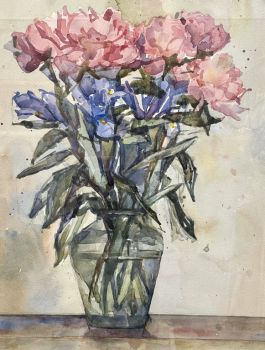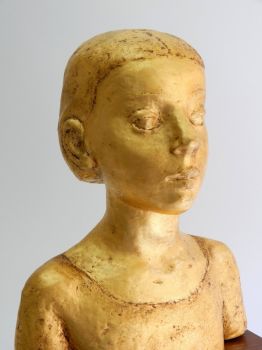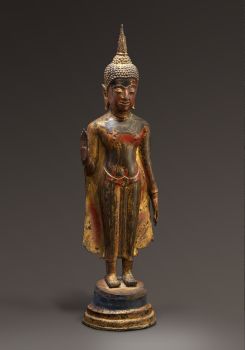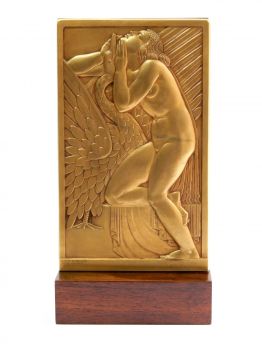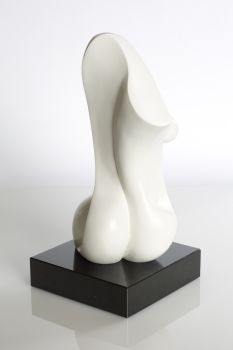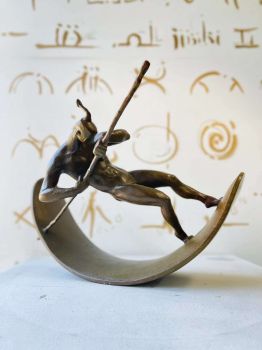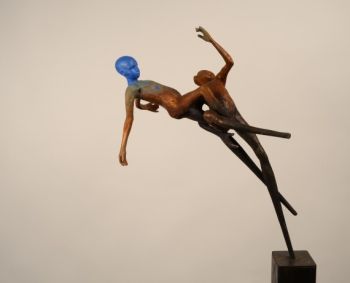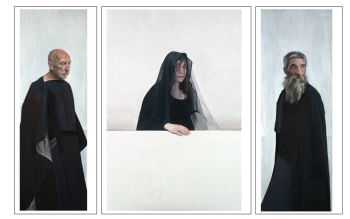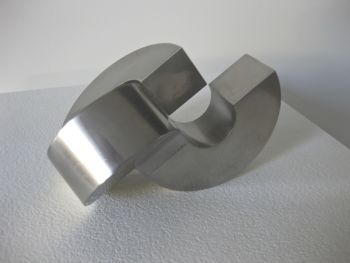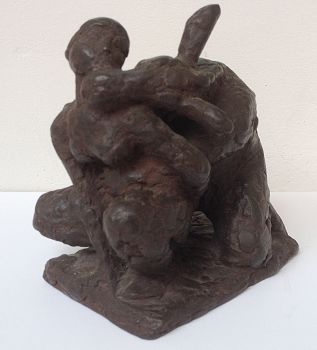A pair of famille verte vases, 18th century Kangxi 1662 - 1722
Onbekende Kunstenaar
Verguld bronsPorseleinChinees porseleinMetaal
17 cm
ConditionVery good
Momenteel niet beschikbaar via Gallerease
- Over kunstwerkA pair of Kangxi period (1662-1722) famille verte vases with the ‘Hundred Treasures’ decor and gilt-bronze mounts, around 1700, Jingdezhen, China.
Famille Verte
Dimensions: 16.8 cm. height.
This exceptional pair of vases has a fine decoration in famille verte style. The use of this style and colours emerged from 1670, during the Kangxi period (1662-1722). Famille verte can be characterized by the use of a combination of the colours green (predominantly), red, blue and yellow. The cobalt blue could be underglaze but it also appears overglaze as the other colours.
On two sides of both vases the ‘Hundred Treasures’ (or the ‘Hundred Antiques’, baigu 百古) are shown. This is a term used for a collection of Chinese symbols or symbolical items that often are depicted in Chinese art. It comprises precious objects, scholar objects and symbols, often referring to the four Chinese ancient arts. The Hundred Treasures are not specifically defined but they comprise specific sets called the ‘Eight Treasures’ (babao 八宝) and the ‘Four Treasures’.
On one side, we can see a resplendent vase with peonies in it, surrounded by treasures. On the opposite side, a beautifully detailed vase as well is shown in the middle, with peacock feathers and blood coral in it. The peacock feathers represent an official rank. The coral stands for longevity. This is very expectational and rich decoration. Also on this side the vase is surrounded by the Hundred Treasures including precious porcelain objects. The other two sides show a natural landscape with rocks overgrown by plants and flowers. Around the flowers, butterflies are flying. The vases are finished with fine gilt-bronze mounts to the top and bottom. The bottom mounts each have four elegant feet surrounded by moulded roses. The insides have bronze compartments as well. These compartments can be lashed out and could be used to add water to the vase without damaging the porcelain paste. The bronze mounts are crafted in Europe (France), in the 19th century.
Condition: good, some small fritting to the side. - Over kunstenaar
Het kan voorkomen dat een kunstenaar of maker onbekend is.
Voor sommige werken is het niet te bepalen door wie het gemaakt is of dat het is gemaakt door (een groep) ambachtslieden. Voorbeelden zijn beelden uit de Oudheid, meubels, spiegels of handtekeningen die vaak niet duidelijk of leesbaar zijn. Maar ook sommige werken zijn helemaal niet gesigneerd.
Ook kunt u de volgende beschrijving vinden:
•"Toegeschreven aan …." waarschijnlijk een werk van de kunstenaar maar niet zeker of gedeeltelijk
•“Atelier van ….” of werkplaats van” een werk uitgevoerd in het atelier of atelier van de kunstenaar, eventueel onder zijn toezicht
•“Cirkel van ….” een werk uit de periode van de kunstenaar die zijn invloed laat zien, nauw verbonden met de kunstenaar maar niet noodzakelijkerwijs zijn leerling
•“Stijl van ….” of “Volger van ….” een werk uitgevoerd in de stijl van de kunstenaar, maar niet noodzakelijk door een leerling; kan eigentijds of bijna eigentijds zijn
•“Wijze van ….” een werk in de stijl van de kunstenaar maar van latere datum
•"Na …." een kopie (van welke datum dan ook) van een werk van de kunstenaar
•“Getekend…”, “Gedateerd….” of “Ingeschreven” dan is het werk gesigneerd/ gedateerd/ ingeschreven door de kunstenaar. De toevoeging van een vraagteken duidt op een element van twijfel
•"Met handtekening ...", "Met datum ...", "Met opschrift..." of “Draagt signatuur/datum/opschrift” dan is de handtekening/datum/opschrift toegevoegd door iemand anders dan de kunstenaar
Artwork details
Related artworks
Onbekende Kunstenaar
Edwardiaanse ring met van kleur veranderende saffier1910 - 1920
Prijs op aanvraagAns Hemke-Kuilboer Juwelier & Antiquair
1 - 4 / 12Onbekende Kunstenaar
Series of 6 Chinese cups and saucers (Yongzheng period)1722 - 1735
Prijs op aanvraagKuipers Kunst & Antiek
1 - 4 / 12- 1 - 4 / 24
Johann Loetz (Lötz) Witwe Klostermühle
Johann Loetz Witwe - Phänomen Genre 7773 – Orange1900 - 1910
Prijs op aanvraagAntiques Emporium
1 - 4 / 24Onbekende Kunstenaar
Series of 6 Chinese cups and saucers (Yongzheng period)1722 - 1735
Prijs op aanvraagKuipers Kunst & Antiek
1 - 4 / 24

